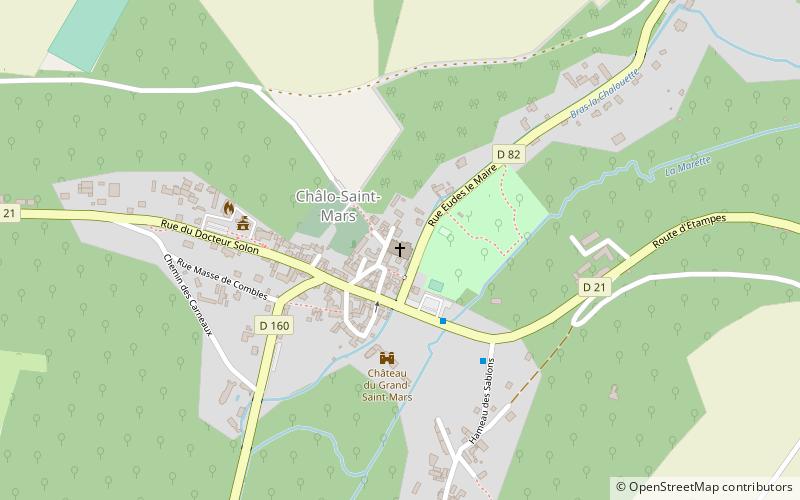St. Médard Church


Facts and practical information
The church of Saint-Médard de Chalo-Saint-Mars is a parish church of Catholic worship, dedicated to the bishop of Tournai Saint-Médard, located in the French commune of Chalo-Saint-Mars and the department of Essonne.
Saint-Mars is a deformation of the name of the saint Médard de Noyon. During the French Revolution, the new commune was renamed Chalo-la-Raison, then simply Chalo in 1793, it took back its original name in 1801. Towards the end of the 11th century, the mayor of Chalo, that is to say his steward, named Eudes, received from King Philippe I a privilege that could be transmitted to his descendants, the text of which was tampered with in the following centuries and interpreted as a tax exemption for the descendants of both male and female lineage.
In 1149, the church of Chalo-Saint-Mars, placed under the name of Saint Médard, bishop of Soissons, was erected by Gozlin, bishop of Chartres, as a priory in favor of the Chartres abbey of Josaphat. From the 14th century, the territory of Chalo was divided into many small fiefs, the main ones being, in the valleys, La Fosse, Boinville, Guerville, Les Carneaux, Obterre, Chérel and Longuetoise and, on the plateau, Le Tronchet.
The nave has three vessels and dates from the 16th century; it is preceded by two porches, one gothic, the other Renaissance. An abutment in the nave is dated 1547. The keystone of the second bay of the right side aisle bears the date 1758. The choir and the stump of the bell tower that flanks the nave to the north date from the 12th century. After the Revolution, the parish of Saint-Hilaire is - until today - part of Chalo.
The stained glass windows, by the master glass artist Lorin from Chartres, date from 1895. There are three bells, Antoine Cécile, cast in 1891 in Lorraine by the founder Robert Jules, and given by Henri Daniel Massé de Combles, then deputy mayor; Louise Marie, which comes from another parish in the vicinity and would have been attributed to the commune of Chalo-Saint-Mars in 1793 for its civil clock in order to replace the original bell that was sent to Paris; finally Louise brought back from the disused church of Saint-Hilaire, which was partially destroyed during the Revolution. The latter bears the following inscription: "LOUIS DE LATTEIGNANT, PARRAIN ET SOEUR MARGUERITE ELISABETH DE MARESCOT PRIEST OF SAINT-HILAIRE". The rest of the religious furnishings date from the 19th century, including the sculpted choir stalls.
Île-de-France
St. Médard Church – popular in the area (distance from the attraction)
Nearby attractions include: Tour Guinette, Ormoy-la-Rivière, Église Notre-Dame-du-Fort, St. Martin's Church.











